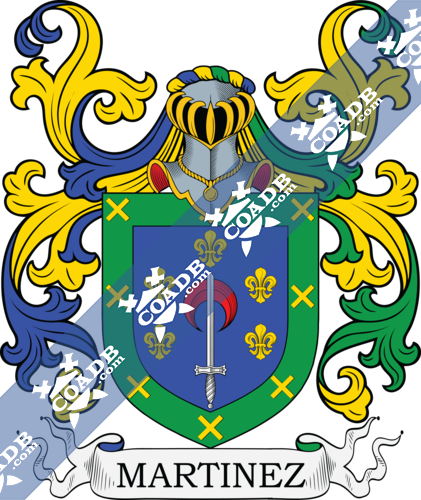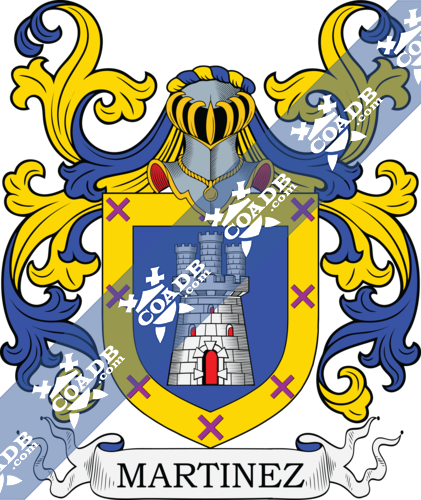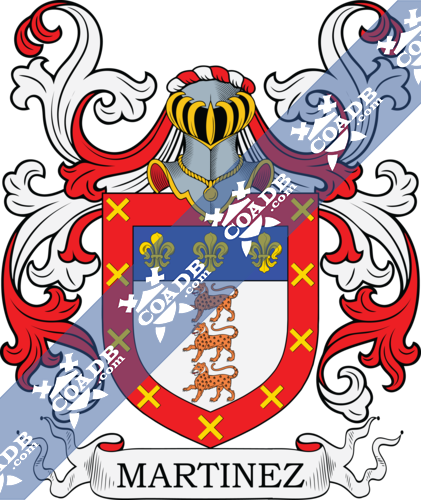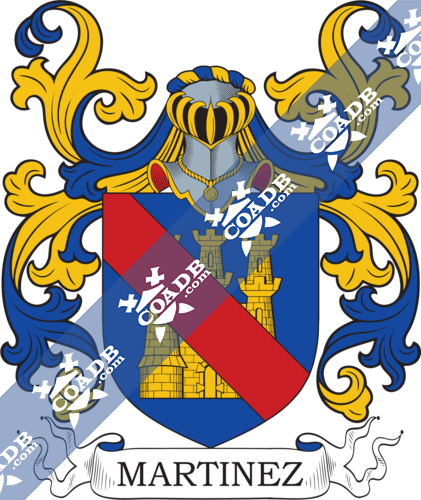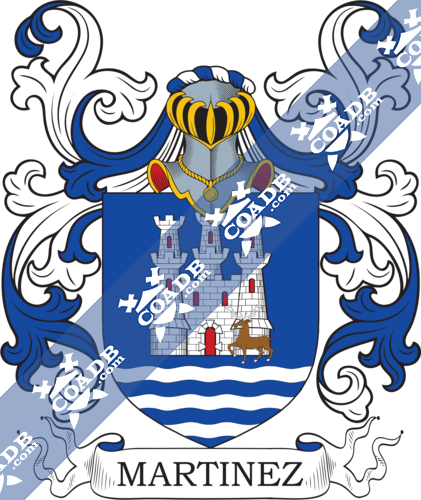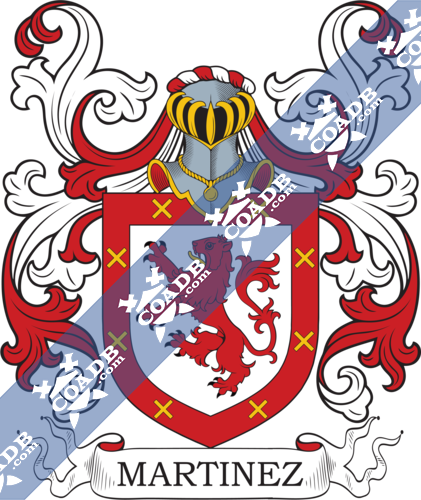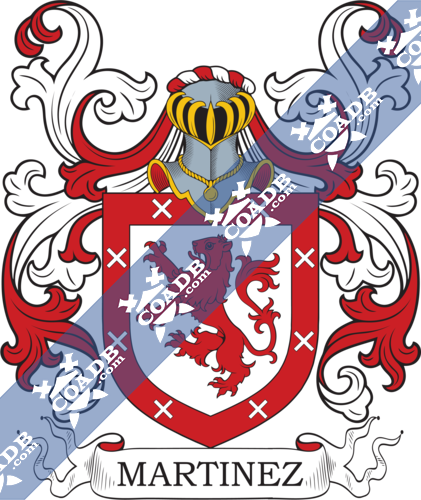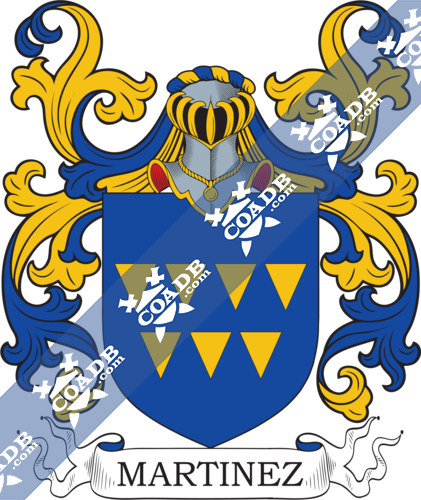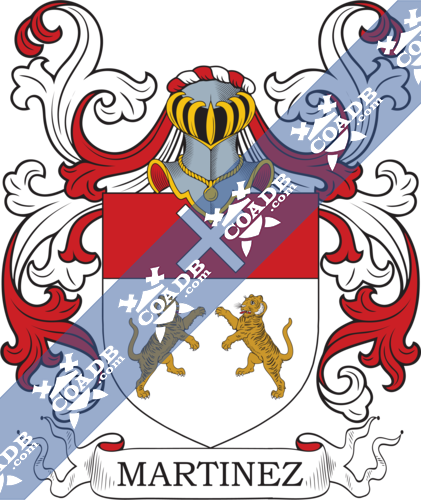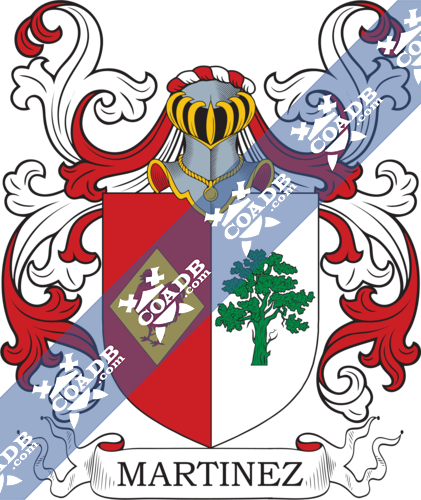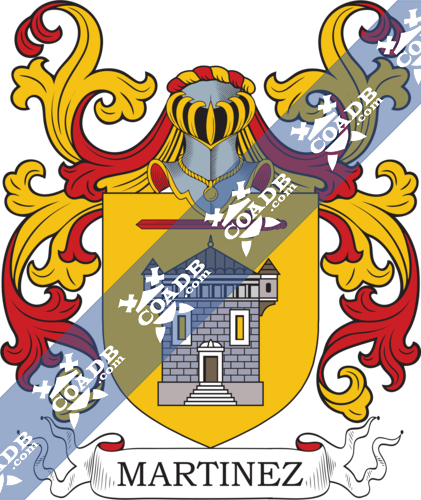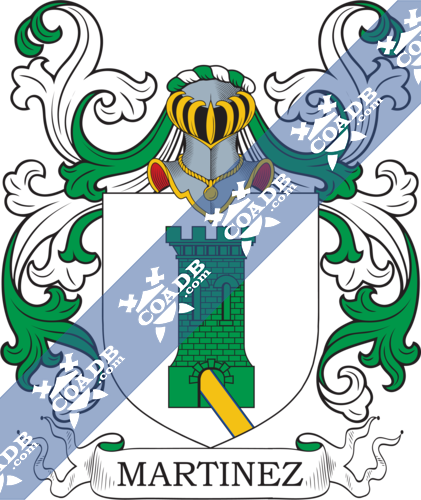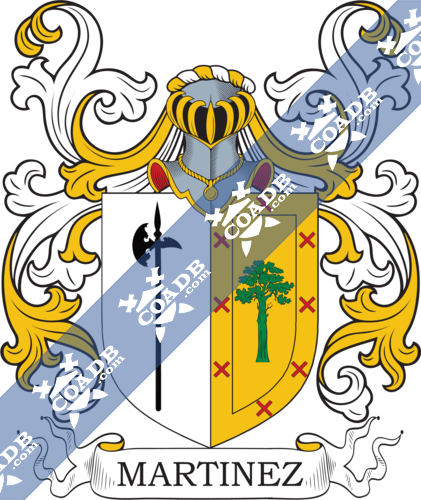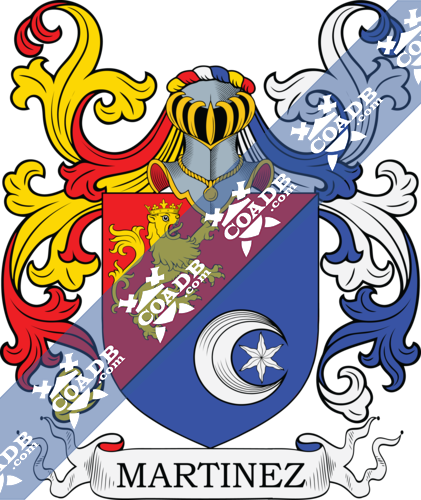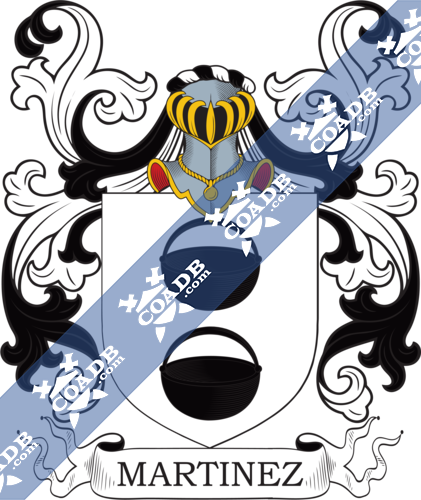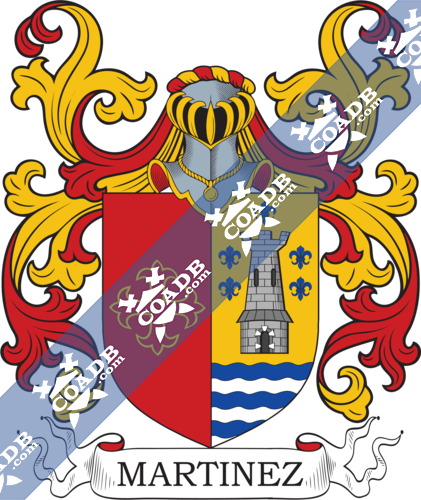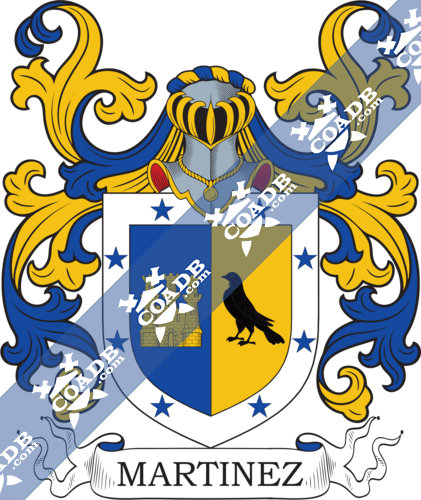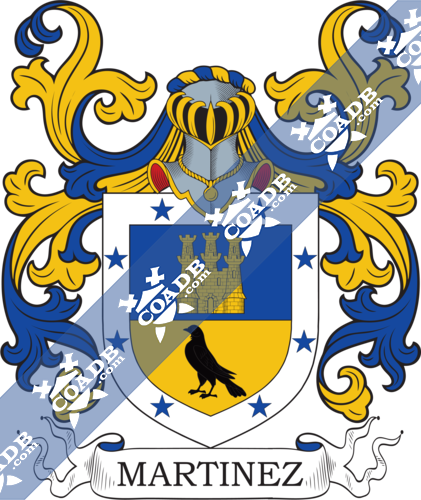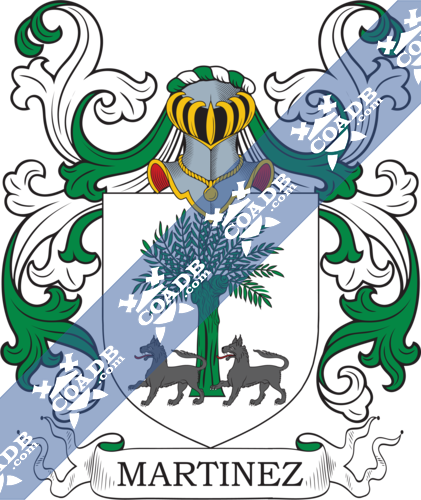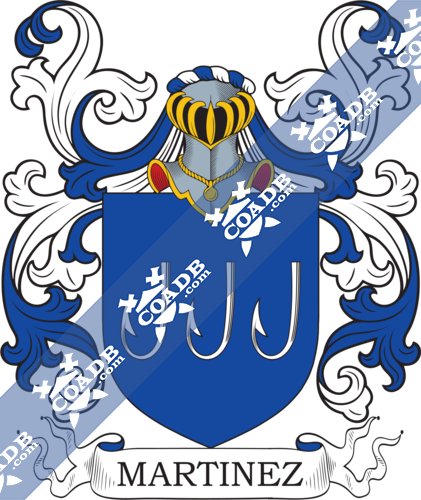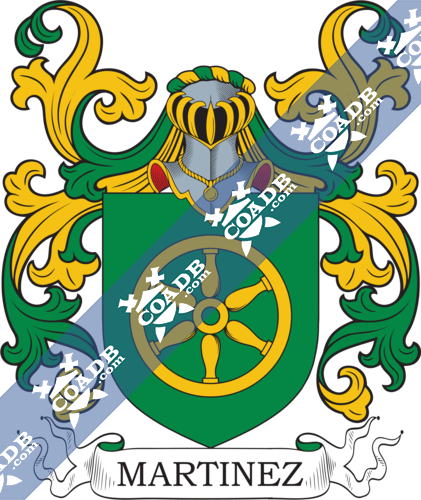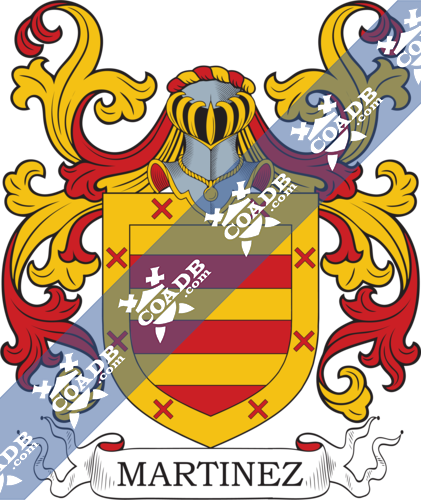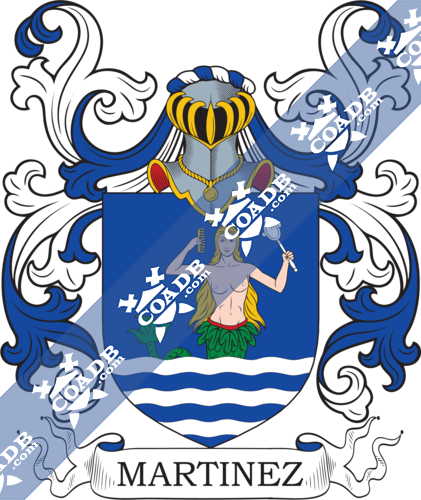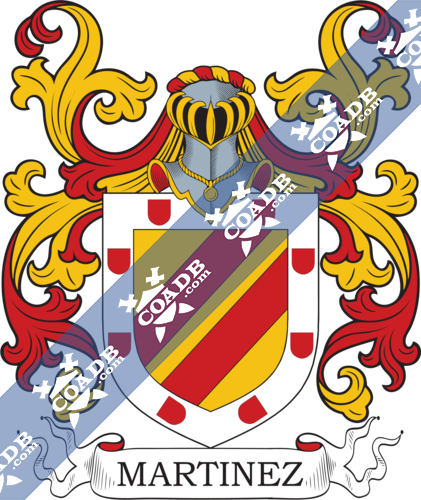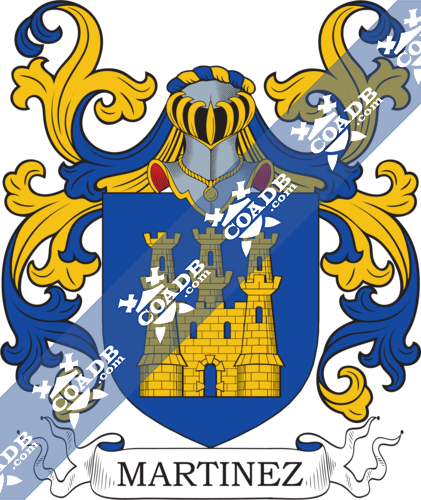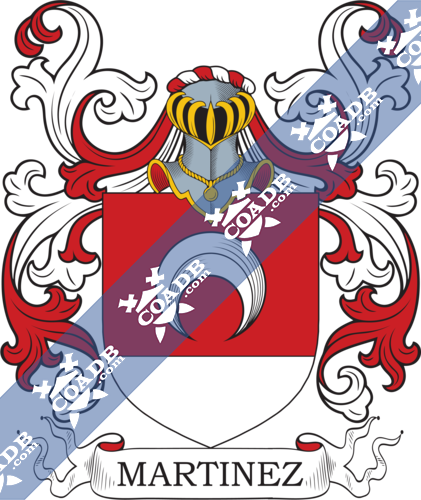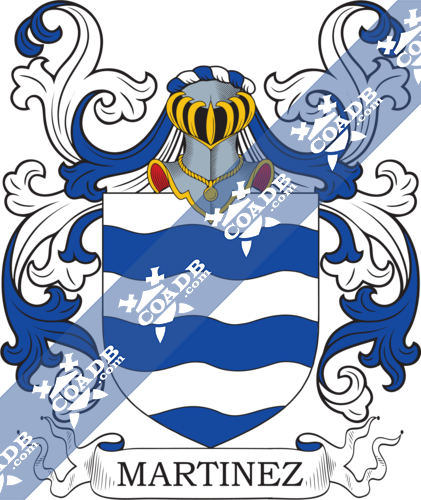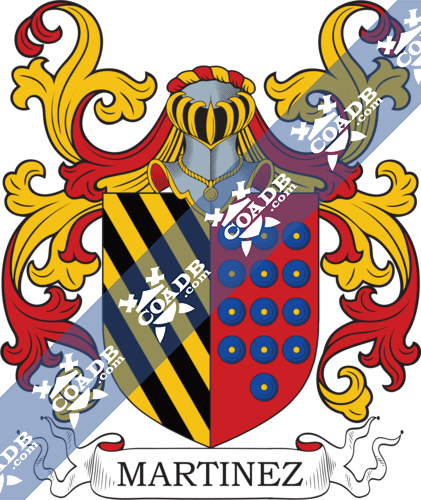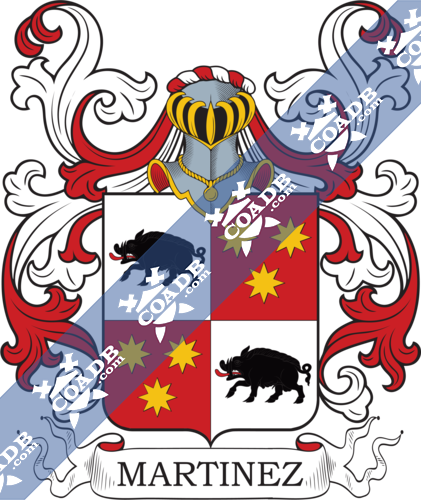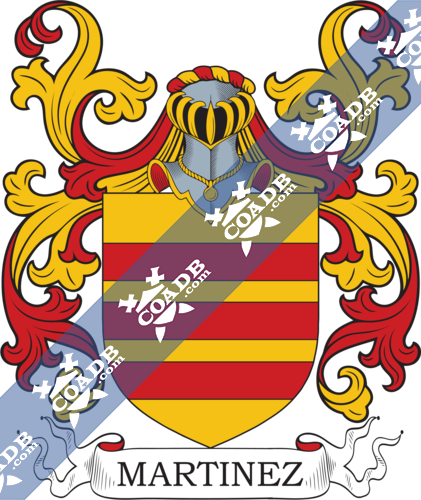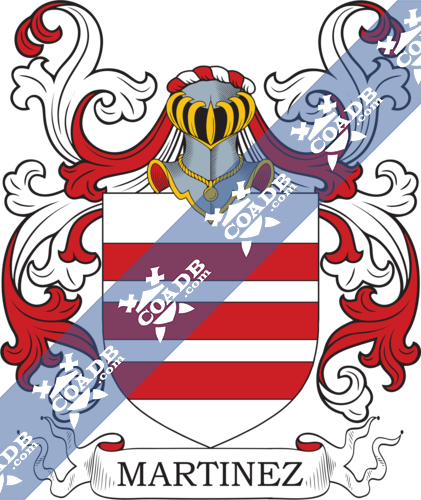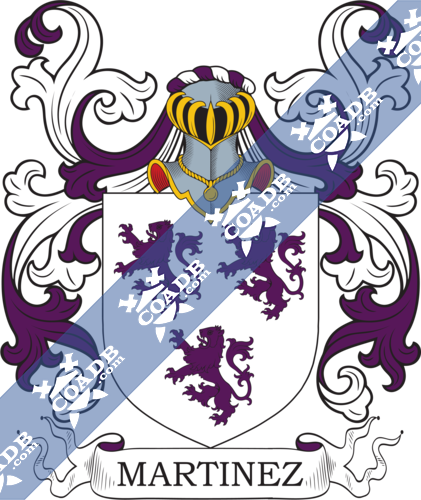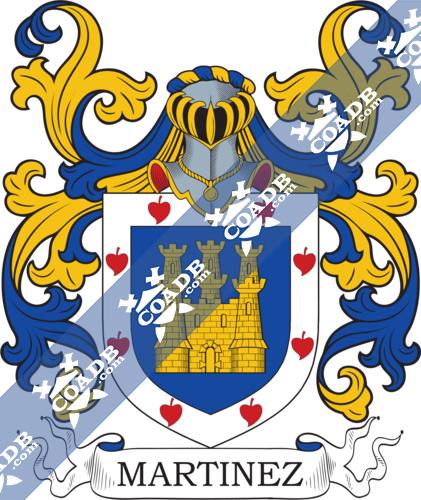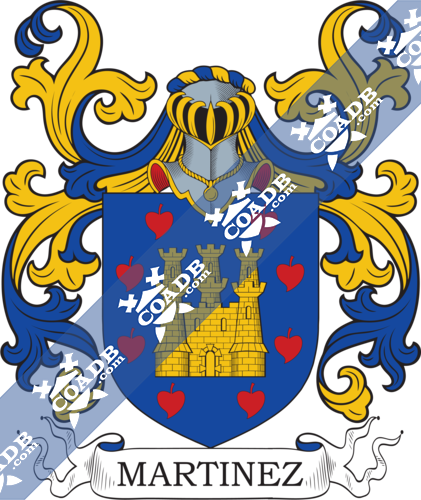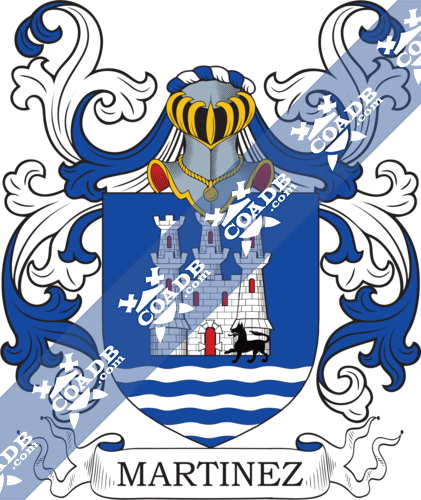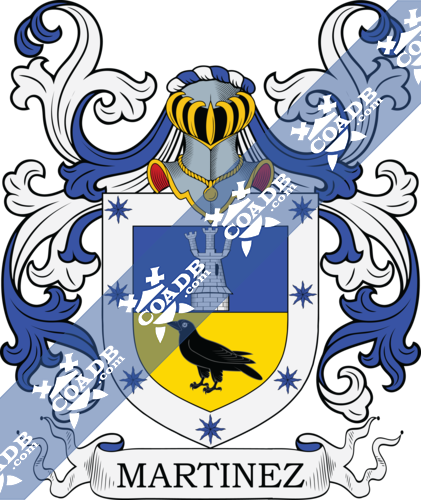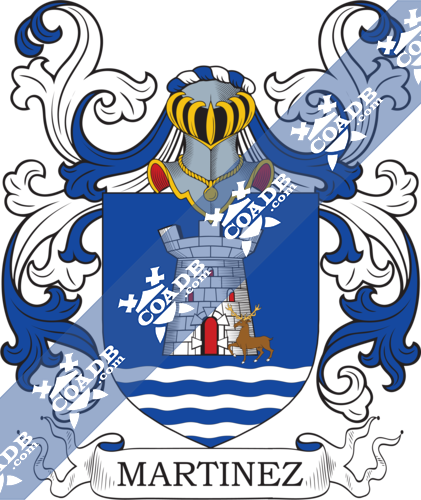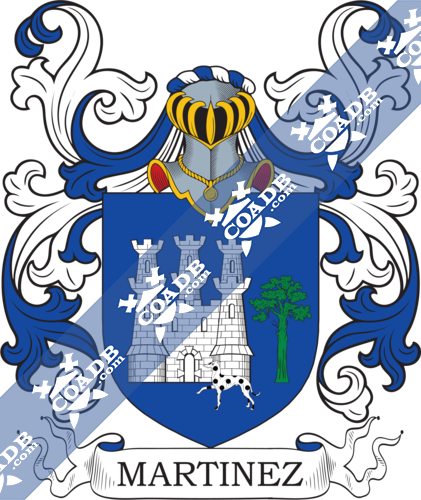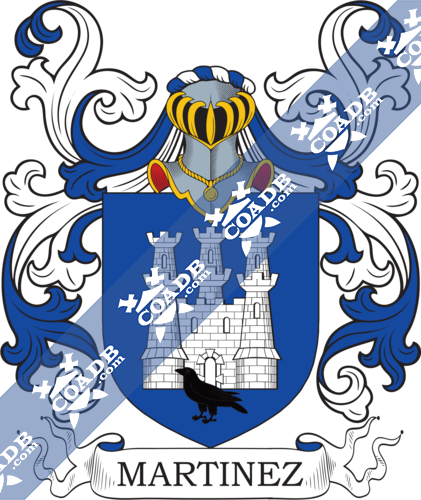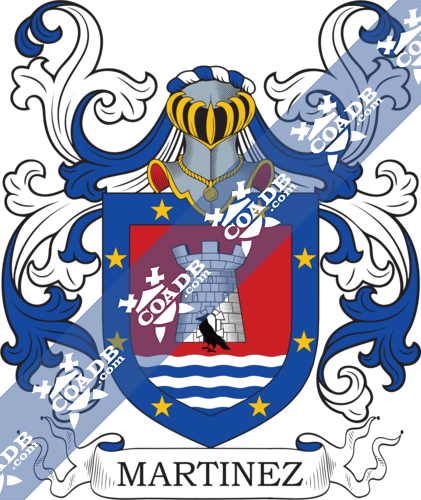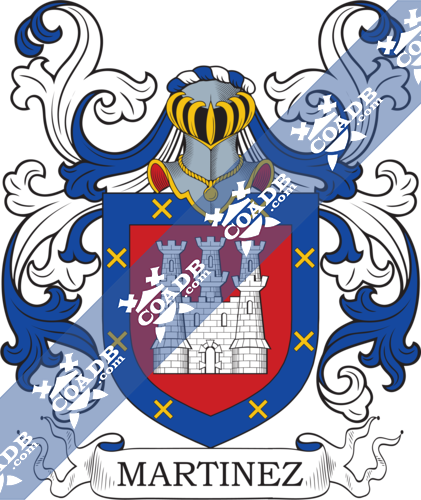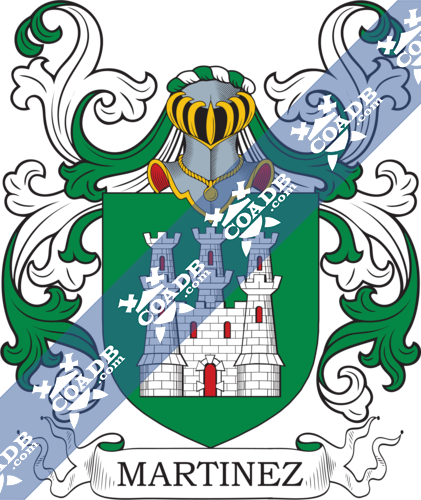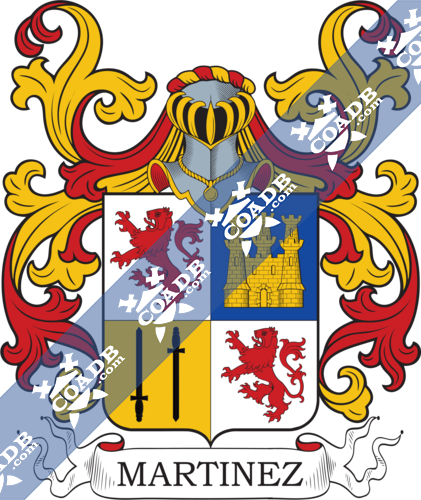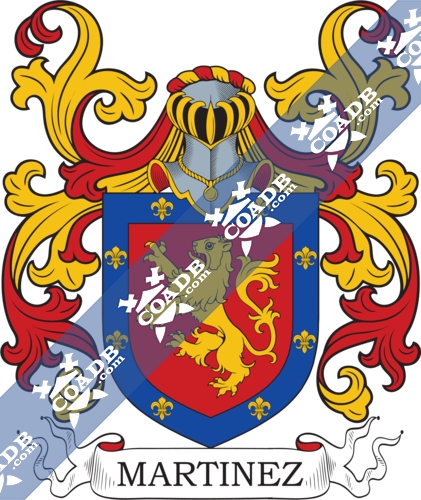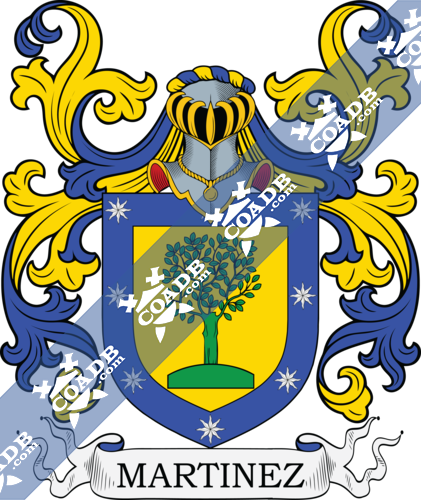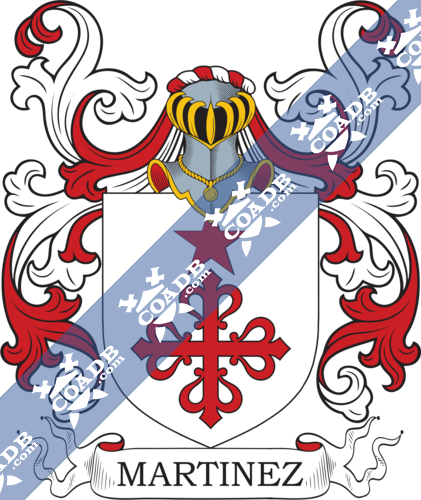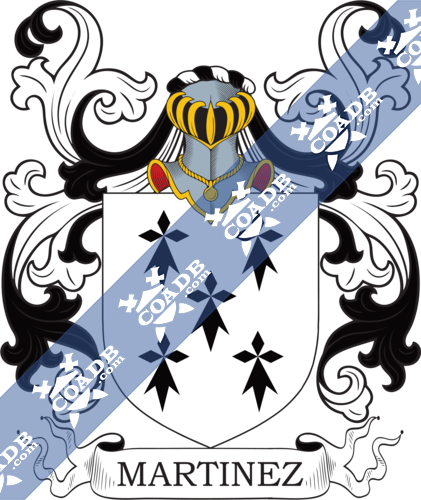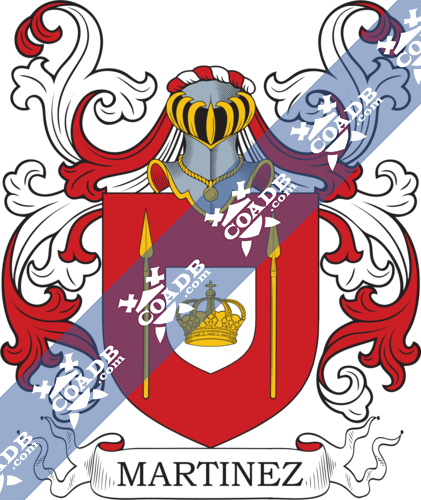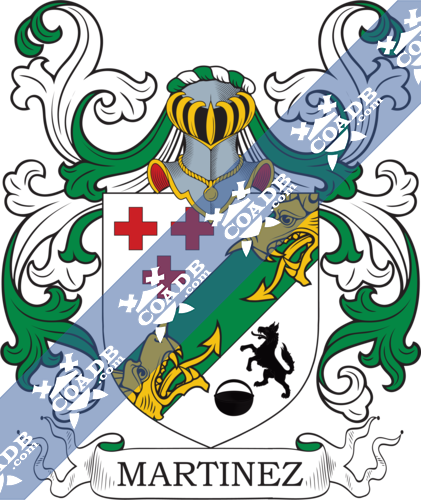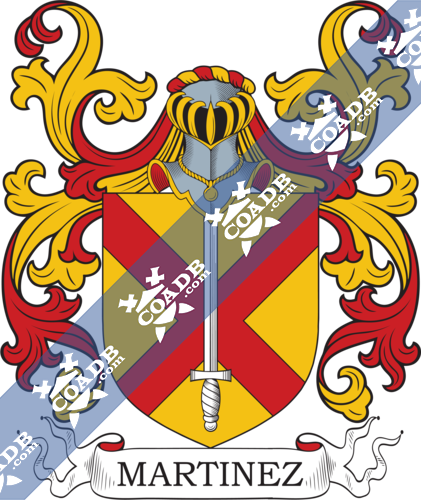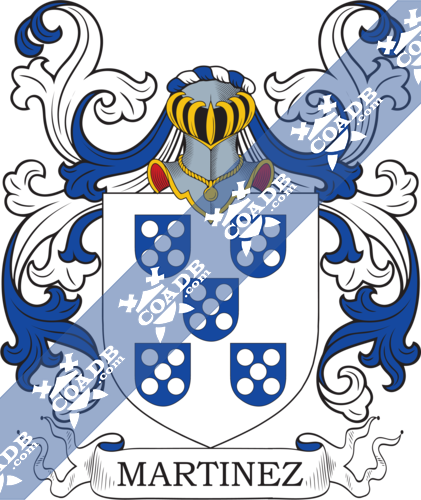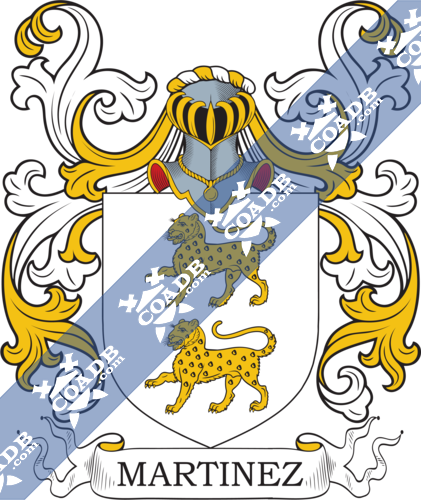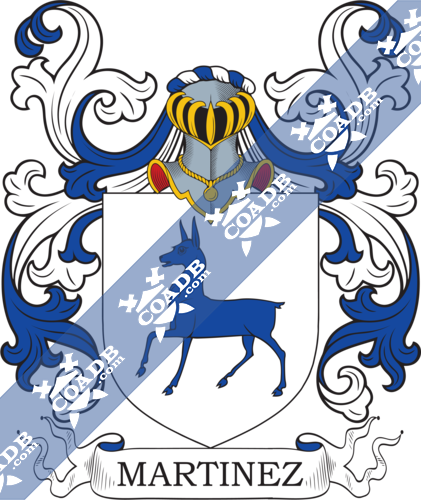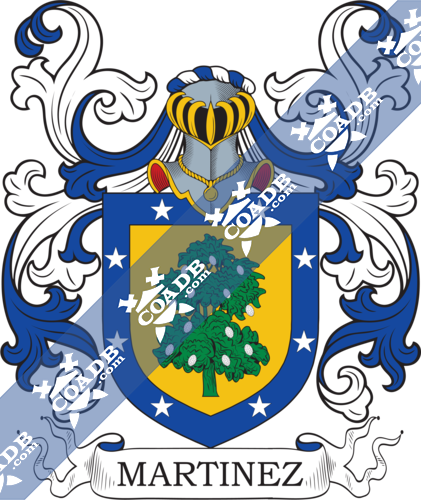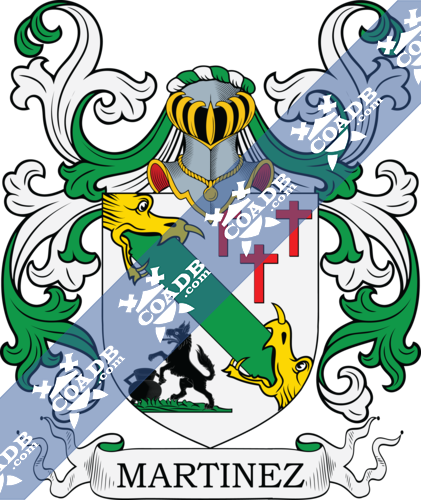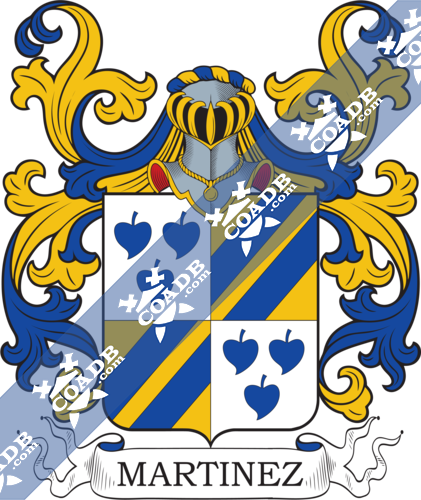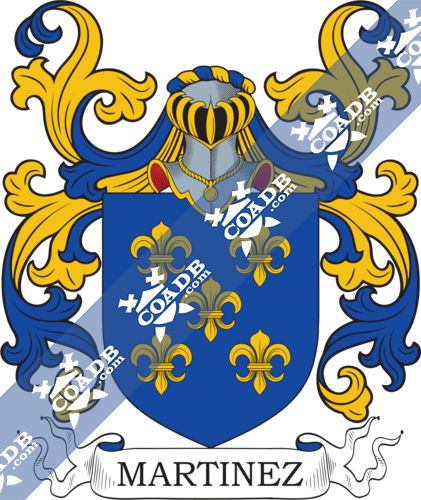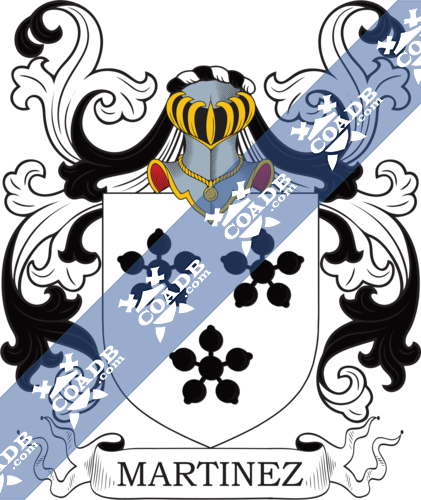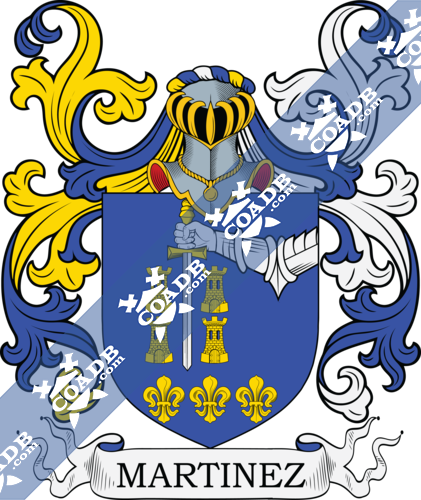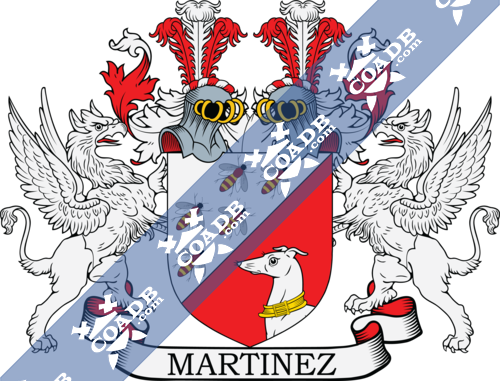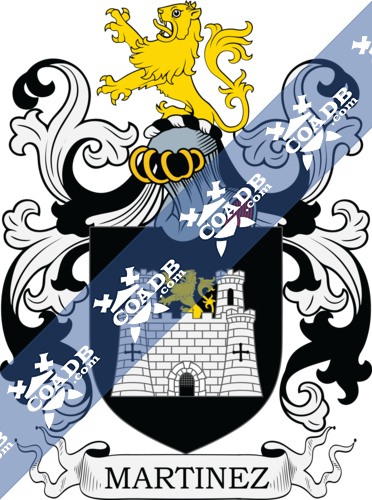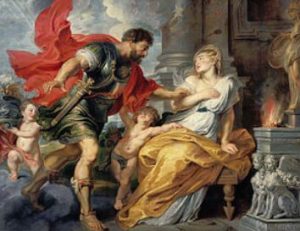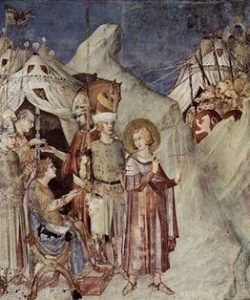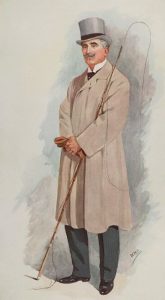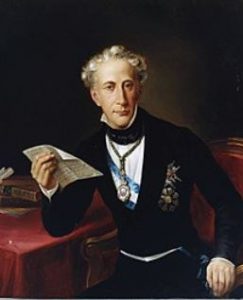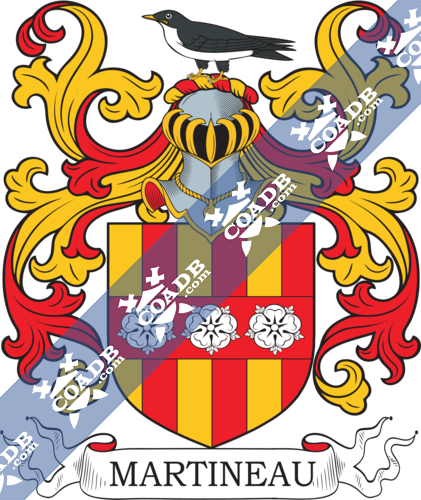Martinez Family Crest, Coat of Arms and Name History
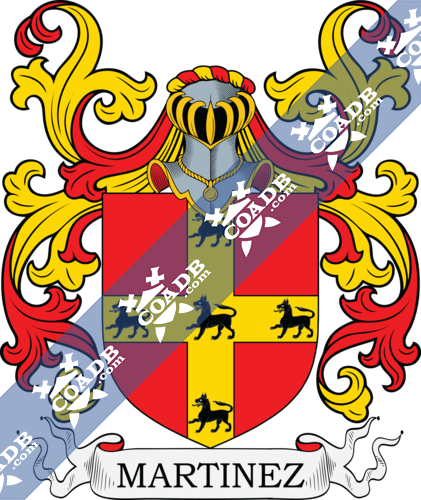
Martinez Coat of Arms Gallery
Don’t know which Coat of Arms is yours?
We can do a genealogical research. Find out the exact history of your family!
Learn MoreThis Spanish surname, most common in the Murica, La Rioja, Cuena, and Navarre regions, is a patronymic form (“son of”) of the ancient personal (first) name Martin, a name which itself likely derives from the Roman/Latin name Martinus, associated with the Roman god of war, Mars.
The name was popularized throughout Europe (ex. Martin in England, Martineau in France, Martins in Portugal, Marintelli in Italy, and Martinescu in Romania) by the Catholic Saint who bore it, Saint Martin of Tours (316-397 AD) a French saint who was born in Hungary, whose shrine became a famous stopping point of pilgrims on the road to Santiago de Composetla in Spain. Five Popes also had Martin as a first name. One source claims the name was first found in Old Castile during the era of the Visigoths, a western branch of a nomadic German tribe. The name is not present in Christendom, as the Mozarabs Arabized the name to Mardanish.
The name also became popular throughout the New World because of Spain’s dominance on the world scene the sixteenth and fifteenth centuries. Early settlers in the New World bearing this name include Juan Martinez Ampues (1527 Venezuela), Isabel Martin (Peru 1560), Bernardo Martinez (Nicaragua 1560), Leonor Martinez (Cuba 1650), Martin Martinez (Florida 1563), and Francisco Martinez (Puerto Rico 1656). In the year 1812, several members of this family arrived in the United States: Alvaro, Beatriz, and Diego. In the 2000 US Census, this surname was ranked 11th.
Notable people bearing this surname includes, but is not limited to, the following: 1) Raul Martinez (1920-1995) who was a Cuban painter and artist, 2) Tomas Eloy Martinez (1934-2010) who was an Argentine journalist and writer, and 3) Esteban Jose Martinez Fernandez y Martinez de la Sierra (1742-1798) who was a Spanish explorer and navigator who explored the Pacific Northwest.
One source claims the earliest recorded bearer was Marinez di Castile documented in 1580, but far earlier recorded persons exist. A one Maria Martinez was born in 1572 in Pueblo de Los Angeles, Mexico. She married Marin Merino in 1589 and together they had a son named Bernabe Merino prior to her death in 1605. A one Innes Martinez was born in 1551 in Lobon, Spain. She married Juan de Lozano and they had four issue together: Francisco Gonzales, Juan Lozano, Maria Lozano, and Cristobal Lozano Martinez. A one Alonso Martinez was born in 1575 and married Ana de Herrera, and had a son named Matias Martinez de Herrera.
One of the earliest settlers of the state of Nuevo Leon, Mexico was Captain Jose Martinez. He was the son of Captain Ignacio Martinez Navarro and Isabel Flores Salazar. He likely was from the Villa de Saltillo in the state of Coahuila, Mexico, where his parents were lived. Early in the 1600s, there were other Martinez branches, such as the Martinez Guajardo and Martinez de Ledesma, who almost certainly left descendants in the state of Nuevo Leon. However, some historians believe that Martinez and Martinez Guajardo came from the same roots, as did the Ledesma.
Research on the surname Martinez reveals it has at least 31 different coats of arms, as listed in Alberto Garcia Carraffa’s books, an author who considered an authority on Spanish Heraldry.
Blazons & Genealogy Notes
2) Milan – De sable à un château sommé de deux tours d’argent ouvert du champ les créneaux entaillés au lion naissant d’or mouvant du château entre les deux tours Cimier le lion issant. English: Sable a castle surmounted by two towers argent openings of the field the crenellations cut by a lion naissant (emerging from half way from the battlements) or between the two towers. Crest- the lion issuant.
3) Sicile – Taillé au 1 de gueules au lion rampant et contourné d’or couronné du même au 2 d’azur à un croissant contourné d’argent acc entre ses cornes d’une étoile du même. English: Per bend sinister First gules a lion rampant facing to the sinister or crowned of the same Second azure a crescent facing to the sinister argent having between the horns an estoile of the same.
4) Royaume de Léon – Coupé au 1 écartelé a et d d’argent à un loup passant de sable b et c d’or à un bras armé d’argent mouvant du canton senestre du chef et tenant un poignard au naturel la pointe dirigée vers le canton dextre de la pointe au 2 d’argent à un pommier de sinople fruité de gueules sommé d’une colombe au naturel le vol étendu et une bordure d’or ch de huit écussons d’azur surch chacun de cinq besants d’argent 2 1 et 2. English: Per fess First quarterly a: & d: argent a wolf passant sable b: & c: or an armoured arm argent coming from the sinister quarter of the chief and holding a dagger proper the point towards the dexter quarter of the base Second argent a crab apple tree vert fructed gules surmounted by a dove proper the wings extended and a bordure or charged with 8 escutcheons azure surcharged with 5 bezants argent 2,1 and 2.
5) Bohême – (Chevaliers, 25 nov. 1858; barons, 3 déc. 1864) Taillé au 1 d’argent à cinq abeilles au naturel rangées dans le sens du taillé posées 2 et 3 au 2 de gueules à une tête et col de lévrier d’argent colletée et bouclé d’or mouvant du canton senestre de la pointe Deux casques couronnés Cimiers 1° et 2° trois plumes d’autruche une d’argent entre deux de gueules Lambrequin d’argent et de gueules Supports deux griffons d’argent lampassés de gueules Devise IN ROBORE ET FIDE. English: Per bend sinister First argent five bees proper arranged bend sinisterwise 2,3 Second gules the head and shoulders of a greyhound argent collared and buckled or coming from the sinister base quarter Crowned with two helmets Crests- First & Second three ostrich feathers, one argent between two gules Mantling- argent and gules Supporters- two griffins argent langued gules Motto- IN ROBERT ET FIDE.
6) Asturies, Galice – Coupé au 1 d’azur à une tour sommée de trois tourelles d’argent celle du milieu plus élevée au 2 d’or à un corbeau de sable L’écu entouré d’une bordure d’argent ch de huit étoiles (8) d’azur. English: Per fess First azure a tower surmounted by three turrets (tower triple towered) argent that in the middle higher Second or a crow sable, the whole shield enclosed by a bordure argent charged with eight etoiles of 8 points azure.
7) Castille – D’or à un arbre de sinople sur une terrasse isolée du même à la bordure d’azur ch de huit étoiles (8) d’argent. English: Or a tree vert on a mount (lonely) of the same a bordure azure charged with eight etoiles of 8 points argent.
8) Castille – D’argent à la bande de sinople engoulée de deux têtes de dragon d’or acc en chef de trois croix latines de gueules 2 et 1 et en pointe d’un loup de sable rampant contre une chaudière du même posée à dextre sur une terrasse isolée au naturel. English: Argent a bend vert being swallowed at each end by two dragon heads or surrounded by in chief three latin crosses gules 2,1 and in base a wolf sable rampant against a cauldron of the same placed to the dexter on a (lonely) mount proper.
9) de Cabredo – Biscaye, Navarre D’azur à un bras armé d’argent mouvant du canton senestre du chef en fasce tenant une épée d’argent garnie d’or en pal la pointe en bas la lame accostée de quatre tours d’or le tout acc de trois fleurs-de-lis d’or rangées en pointe. English: Azure an armoured arm coming from the sinister chief quarter fesswise holding a sword argent hilt and pommell or in pale the point downwards the blade surrounded by four towers or all alongside three fleur-de-lys or arranged in base.
10) de Doña-Palla – Asturies D’azur à une épée d’argent posée en pal brochant sur un croissant versé de gueules le tout acc de cinq fleurs-de-lis d’or 1 2 et 2 à la bordure de sinople ch de huit flanchis d’or. de Ponte – Asturies Les armes de Martinez de Doña-Palla. English: The arms of de Martinez de Doña-Palla (131 in this list). English: Azure a sword argent placed in pale covering a crescent inverted gules all surrounded by 5 fluers-de-lys or 1,2 & 2 a bordure vert charged with eight saltires or.
11) de La Rosa – Espagne D’azur à une tour sommée de trois tourelles d’argent ouverte et ajourée de gueules à la bordure d’or ch de huit flanchis de pourpre. English: Azure a tower surmounted by three turrets argent openings and portcullis gules a bordure or charged with eight saltires purpure.
12) (Martinez-Fortun). Murcie D’argent à trois onces (animaux) au naturel l’une sur l’autre au chef d’azur ch de trois fleurs-de-lis d’or L’écu entouré d’une bordure de gueules ch de dix flanchis d’or 3 en chef 3 en pointe et 2 à chaque flanc l’un sur l’autre. English: Argent three leopards proper in pale on a chief azure three fleur-de-lys or over the whole shield a bordure gules charged with 10 saltires or 3 in chief 3 in base and 2 in each flank in pale.

